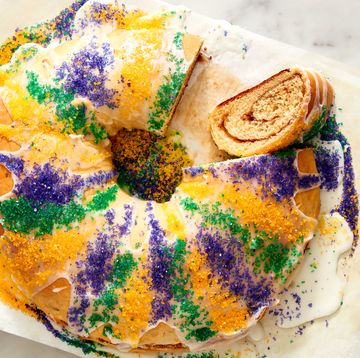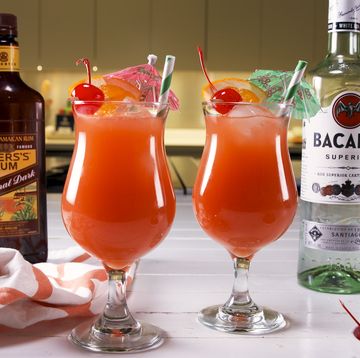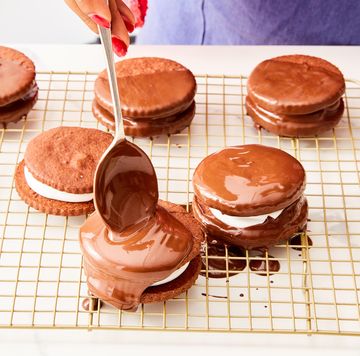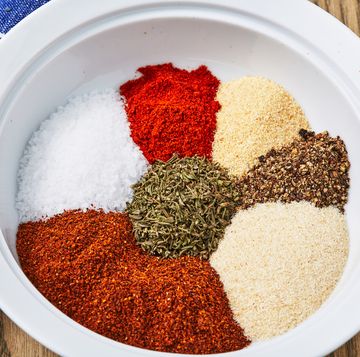Mardi Gras comes with many traditions: parades, beads, bare chests, beads thrown at people who bare their chests, and, of course, the king cake. It's part cake, part bread, all frosted, and it has a baby inside. A fake plastic baby. But why do we consume such a treat on Fat Tuesday? There is, bien sur, mes amis, a story.
The story of the sweet, bready cake is all in the name. The confection's roots can be traced back to European, pre-Christian, pagan harvest celebrations. One element of these celebrations was sacrifice. Every year a man was chosen as the "sacred king." He was treated like a king for the year and then, at the end, sacrificed to ensure a successful harvest.
To determine the "king," several men in the community gathered and ate cake that contained one coin or bean. Whoever received the slice with the trinket was deemed the, well, winner (perhaps not the best word under the circumstances). The tradition continues today. Of course, most people have abandoned the sacrificial events. But more on that later.
More From Delish

When Christianity extended its influence and displaced other religions, the king cake was adopted into the Christian tradition. The cake was used to honor the biblical three kings, whose journey to Bethlehem to greet the baby Jesus took 12 days (hence the 12 days of Christmas).
The cake was served at celebrations during the 12-day season. When French settlers came to Louisiana in the 18th century, they brought their traditions, such as the king cake, which was, at the time, served during Epiphany. It was not until the 19th century, when Mardi Gras overtook Epiphany as the enthusiastic celebration, that the cake became associated with the holiday.
Today's traditional king cake is a twisted ring of brioche-like cake covered in icing or sugar in the Mardi Gras colors of green, gold, and purple. Cajuns tend to take the cake to the next level by deep-fat-frying it and filling it with cream cheese and praline. At a king cake party, the cake still contains a traditional trinket—usually a small baby, which some say represents the baby Jesus.
There is another, more entertaining theory that a local bakery in New Orleans bought a very large shipment of French porcelain babies in the 1950s. In an effort to use them up, they inserted them into the cakes in place of the usual bean or small plastic king.
Receiving the slice containing the trinket is no longer a death sentence. Today it either elevates the recipient to the king or queen of the party. That title does not come without obligation, though: The king or queen is required to either provide the king cake next year or host the next party.
How do you celebrate Mardi Gras? Let us know in the comments.












